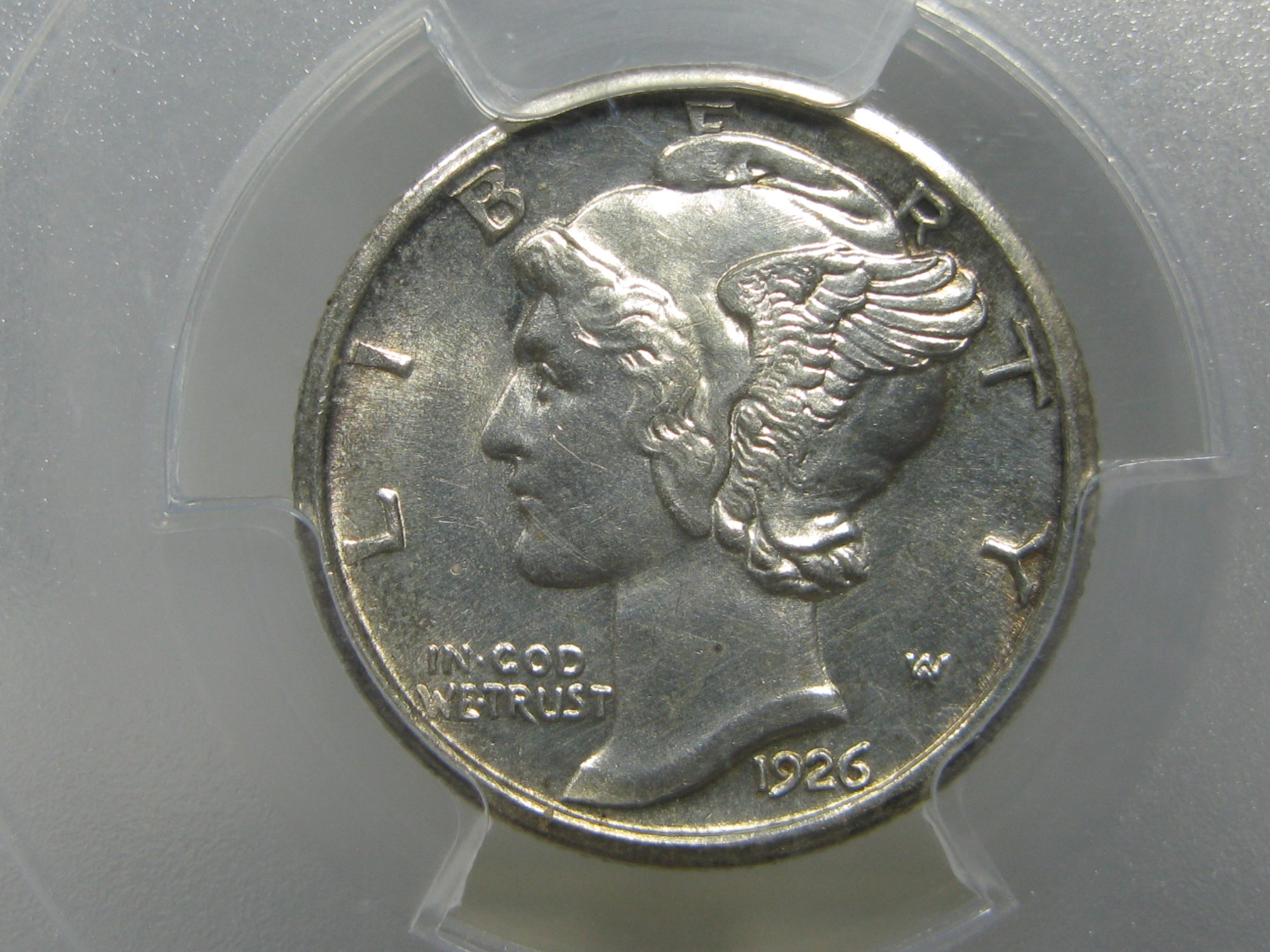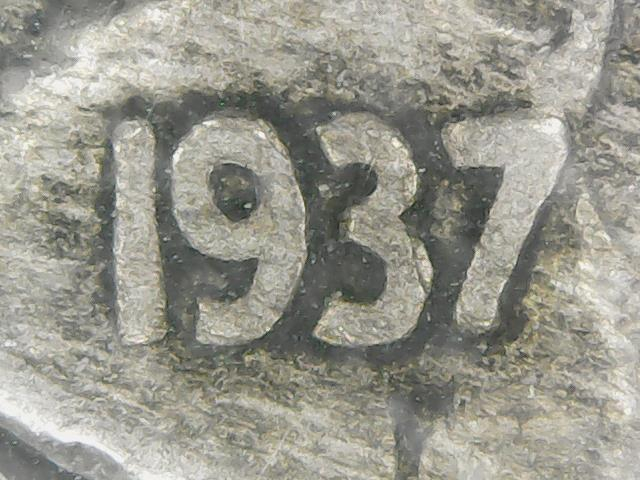What are your "red flags" for spotting cleaning?
 OneOfEverything
Posts: 52 ✭✭✭
OneOfEverything
Posts: 52 ✭✭✭
I'm still relatively new to the hobby and I am still picking things up as I go, so I thought I would ask if anyone has any things they see that point to a coin being cleaned, dipped, polished or otherwise altered? I know the best way to learn is through experience but I figured you all would have some great insights!
0
Comments
I remember dealers using dips and baking soda to sparkle up sliders back in the day, you can tell by the hairlines the process would leave on the coin, I'm sure there are other tale tale signs and other will sure to chime in
Steve
A *.92 on the holder is a good clue.
Bits of steel wool in the slab.
Baking soda in the reeds.
The odor of thiourea.
Dull luster when there are plenty of die wear ridges.
Any coin a dealer holds really close to his light.
Different reflectivity between field and protected areas.
Yellow-white discoloration resembling dust.
Tiny irregular scratches that skip the field next to relief.
A sticker that says "Gem UNC !!!!!!!"
Any coin offered for a lot less than by competitors, or sold by any company having 2-page ads in a hobby publication.
It has this look. Click on picture to enlarge.

.
Ken
Okay, these made me laugh! I love it.
These are really great! Thank you both for chiming in I am sure you have heard these questions a thousand times and I appreciate you still passing the knowledge along.
I am sure you have heard these questions a thousand times and I appreciate you still passing the knowledge along.
Typical coins that are cleaned will have a grayish tone to them or in hard cleaning rounded appearance like the stars in a Morgan dollar. Also look at fields to see if metal flow is not in correct direction.
Best place to buy !
Bronze Associate member
That poor coin has seen some better days! I see a good amount of hairlines on there, the cleaner must have been excited! Lol
The first step is to learn how to detect real mint luster. The best coins for learning that are Morgan Dollars, especially the date and mint market combinations that are lustrous and well struck. The so called “cart-wheel luster” is the key. It is the result of the metal flow that occurred when the coin was hit was the dies. Once destroyed by circulation or cleaning, it can’t be restored.
The next key is to look for hairlines that are going in one direction or hairlines or fine scratches that might be circular. The is the tell-tale sign of a going over with a wire brush.
Mint luster is the real key however. If the mint luster does not look right, chances are the coin has had its surface metal moved which the hallmark of cleaning.
Here is an example right on this site.
https://forums.collectors.com/discussion/1013217/im-not-usually-one-to-bash-graders-but#latest://
When luster is only in the protected areas of the design yet the coin does not look very circulated/worn.
Also important to recognize the differences between the types of cleaning that you listed.
In general, a light dipping on a higher grade silver coin is still 'market acceptable', where physical cleaning,
like polishing, scrubbing, and buffing, are not.
Good advice given above - and a lot of the worst cases can be seen with the naked eye and good lighting.
I will add that, assuming you will be inspecting coins in hand at some point, that you
invest in good magnifier, like an Eschenbach 5X. I wish I had done so earlier on in my collecting career, as it would
have saved a lot of mistakes, by showing 'issues' more readily than the cheap magnifiers.
1. Color
YEs!! @Insider2 And weird toning to try to hide the cleaning.....
Great advice here. Don’t count on the grading companies to save you from cleaned coins. Learn for yourself. Lots of cleaned coins in slabs
Best wishes
Lack of or unusual luster
Odd color
Hairlines
differences around the letters than in the fields
@davewesen said: "Differences around the letters than in the fields."
Color #1 That's my #2 The "halo" effect.
Good thread, more pics please.
This is a lot of amazing information! Thank you to everyone for the answers so far! I have definitely noticed quite a bit of exuberant toning while shopping around online... I may have to start a separate thread on how to spot AT vs NT
For me its the obvious hairlines. Plus the usual lack of luster and shiny look to the coin. Its usually easy to spot, but I have had the same 1917 T1 Standing Liberty that looks very good in high mint state yet it came back twice with the dreaded "cleaned" designation. I still don't think its cleaned. That tells you how tough it sometimes can be.
To OneOfEverything --
PS: Nice to see a new member openly absorbing information and offering positive responses to posts. Good approach to anything.
Thank you very much! There is a ton of knowledge on this forum to soak up, I am just grateful to be able to ask and learn!
There is a ton of knowledge on this forum to soak up, I am just grateful to be able to ask and learn!
I saw this on another thread recently and it was very helpful! That halo effect around the edges of letters vs the field would indicate polishing or buffing, right?
with this picture yes, but it could also be cleaning (imagine a piece of sandpaper cleaning the big open areas and can not get inside or near letters)
The most obvious one is hairlines all in the same direction.
A lot of great information here.... @OneOfEverything ... now you need to get/see coins exhibiting this 'in hand'.... The best experience is actually viewing these issues (now that you know what to look for)....Then, seeing it, will give you the mental picture for future comparisons. Cheers, RickO
i think the best way to learn is just by looking at lots and lots of coins. go to a show and look through a bunch of coins and compare they way they look. you will begin to notice cleaned from not...and once you have that down, you'll spot a cleaned one the second you see it.
pick a series you like and stick with that until you have it. copper gold and silver are all going to be different, so pick one to start out with and stick with that before moving to another.
finally, don't buy any coins until you get more experience, or you will learn the expensive way.
In AU Bust Dollars, you'll notice many fine parallel hairlines, especially in the coin's fields. The luster will look a bit 'off.' Many lightly cleaned coins in this series are slabbed, because many people want them and very few would be available otherwise.
Different standards are involved regarding Draped Bust material (and Classic Large Cents) than later coinage re what is market acceptable.
"Seu cabra da peste,
"Sou Mangueira......."